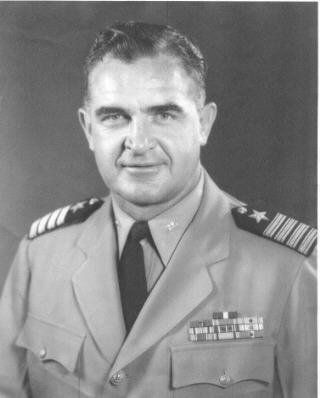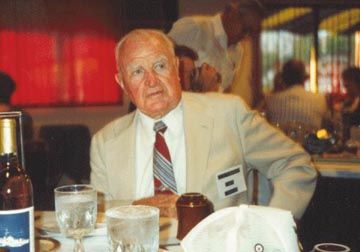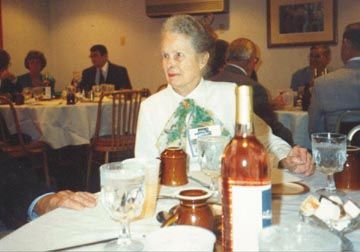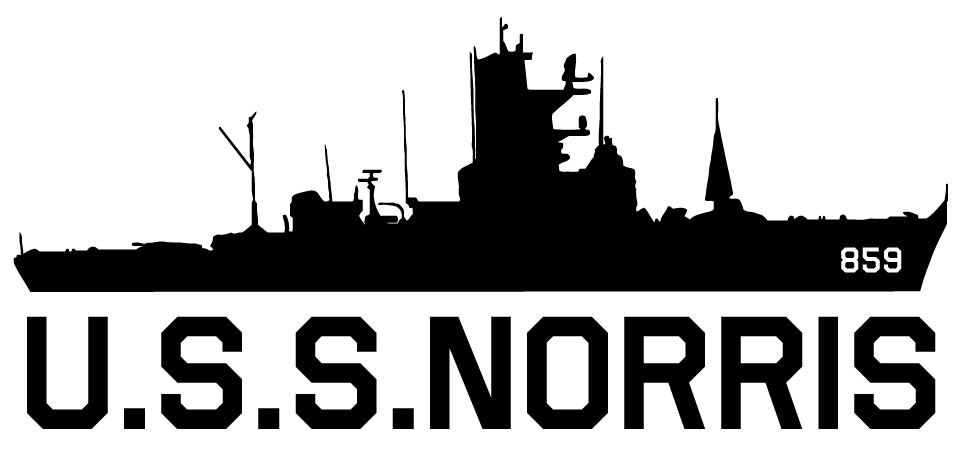45-46-Nisewaner
Nisewaner
First Skipper
June 9, 1945 — March 17, 1946



Captain T. A. Nisewaner USN (Ret) "Andy"
Andy Nisewaner was born in Claremore, Oklahoma April 29, 1910. His Mother moved her family of one daughter and two sons to Boise, Idaho when Andy was nine months old. He grew up at his Aunt Em's on a farm outside Boise, where Aunt Em Rices married to a blacksmith.The Rice family had a number of children of their own, but kept Andy and his brother until they were school age. Their Mother worked in Boise.
Andy attended school in Boise from first grade through high school. At age eleven he began to work, pedaling handbills, until he won a bike. After that he had a paper route, lawns to cut, and caddying jobs.
In his senior year, two graduates from the Naval Academy spoke to the assembly at the high school. After hearing them Andy knew what he wanted to do. Senator Borah gave him an appointment to West Point, which Andy returned to the Senator. He did not want to go into the Army. He graduated on the Honor Roll and as a member of the National Honor Society. The day after graduation he enlisted in the Navy, so he could attend the Naval Academy Preparatory School (NAPS) in San Diego. He passed that course and entered the Naval Academy in 1928. While there he boxed intramural boxing, played varsity Lacrosse and B Squad Football. He graduated and was commissioned in 1932.
The first seven years of his career was spent at sea. This was customary at the time. His first three years were spent on the light cruiser Omaha. He was signal officer on the 0maha. Duty aboard the destroyer Breese followed. He was mining officer on that ship. The following year and a half was spent as First Lieutenant aboard the destroyer Gilmer. That tour was followed by a year aboard the cargo ship Sirius. He was first lieutenant, first division officer and gunnery officer. Only there were no guns, except for skeet shooting in which all hands participated in once a week. The Sirius spent long periods of time at sea. They towed the battleship Kersarge from Bremerton to New York at five knots an hour!
Following duty aboard the Sirius, he married Edna Whiting in Larchmont, N.Y. He had been ordered to the PG School in Annapolis. Hitler went into Poland and the PG School was closed and all students were sent to sea. Andy Joined the cruiser Astoria in Bremerton, Wash. after he and Eddie had driven cross-country in a week. The Hawaiian Detachment was being formed. The Astoria was to be part of that detachment. In October l939 Andy and Eddie found a house on The Peninsula in Pearl City, where they lived until June 1940. Andy was ordered to Annapolis as first lieutenant of the Athletic Department. As first lieutenant he supervised the building of a second floor on the gym, wrote the new Physical Training Manual, coached football and set up the program for the V6? (I am not; sure whether they were (V6 or V7) inductees, who trained at the Academy after WW II began. In June 1942 Andy was ordered to the USS Butler, which was being built in Philadelphia. He was executive officer (XO) He saw action on her in convoy duty in the Atlantic. After a short tour aboard the Butler he was ordered to be Chief of Staff for Admiral Dashiel Livingston Naderia, who flew his flag from the destroyer Nelson. They saw action in the African campaign and in the Sicily campaign. In l943 Andy was ordered to put the Albert W. Grant in commission. She was being built in Charleston, S. C. After a month shake down they sailed for the Pacific, escorting the carrier USS Hornet.
The Albert W. Grant (I never say "The Grant", because there was another ship in the Pacific by that name. It was a troop ship.) Joined a task force, took part in the shelling of the Islands of Tiniah and Saipan trying to dislodge the Japanese. It was for this action Andy was awarded the Bronze Star. The Albert W Grant went on under Admiral Olendorf and Captain Roland Smoot to take part in the battle of Leyte Gulf. There were nine destroyers under Admiral Oldendorf. Three were sent toward the enemy along each shore of Surago Straits.
Three ships were sent down the middle of the straits. Andy's ship was the last in the column. They were to cross the T. The Japanese force was coming through the straits. The ships going up the middle of the straits were to meet the enemy force, turn, fire their torpedoes and hurry away. The ships going up the shore had the same mission. Before they were in position to turn, the Japanese had a perfect straddle on the A.W.Grant (The A.W Grant managed to fire their torpedoes, two of which found their mark) as did one of the defending US cruiser, the USS Denver. The AW Grant took 12 hits from the enemy and 13 from the friendly fire in three minutes, wiping out a third of the crew, either killed or wounded. They managed not to sink. They stuffed mattresses, anything handy, in the holes in them. Andy went down to the forward fire room and pulled out two men, but was too exhausted to go down into the heat and steam a third time to get the third man. They were towed to Manus Island, where they endured a typhoon. The ship had only one engine and one propeller and could only go in reverse... backwards, which they did all night long during the typhoon somehow managing not to hit anything, because there were many ships anchored in the harbor at Manus after the battle. For the actions of the AW Grant, Andy was awarded the Navy Unit Citation and the Navy Cross, At the time Andy, was the youngest Destroyer skipper in the Pacific. He brought the A.W. Grant back to Mare Island on one engine and one propeller unescorted. As the tugs took the ship on tow off Mare Island everything in the line of machinery quit. The ship was repaired and sailed again.
In 1945 Andy put the destroyer USS Norris in commission in Long Beach. He took her to the Far East before returning to attend the Naval War College in Newport, R.I. While in the Far East, he was U.S. Claims commissioner with the power to settle any claim up to $500.00. This duty was followed by a variety of duties including executive office of the Fleet Sonar School in San Diego, command of a division of destroyer escorts, command of the destroyer tender USS Arcadia in Newport, R.I., a squadron of destroyers that operated in the Far East. Two tours in the Pentagon during one of which he got an MBA at night at George Washington U. He was a member of the staff of the Joint Chiefs of Staff when he retired in 1962.
Immediately following retirement he attended Duke University for one year and one summer to get his Masters in teaching with a major in Math. After a brief time teaching in California he returned to Maryland. He taught at Montgomery Blair for a year and then 12 years at Walt Whitman High School. He coached the swimming team to first place at the Towson State Helay Championship, the East Carolina Invitational and a first place in the Metro Area Championships all in 1969. The team placed in all these events in 1970. In 1971 they won the area Metro Championships. He coached the Cross Country team to the state championship ( I can't tell you the year) He also coached indoor track and golf. During this period the Golfing group, the Mulligan was founded. He was one of the founding members. He was a member of Edgemoor Club during the time the family lived in Edgemoor, though he was a golfer not a tennis player. His daughters were all swimmers. Two swam for Edgemoor and one for Kenwood. He became a member of Kenwood in l955.
He was diagnosed as having chronic lymphatic leukemia (CLL) in 1991 as a result of the shingles, which he had in December 1990. In l993 he had three melanoma removed, one of which was invasive. In January 1995 the CLL became lymphoma and the melanoma reared its ugly head. Thankfully he was not in pain and kept going as long as possible.
